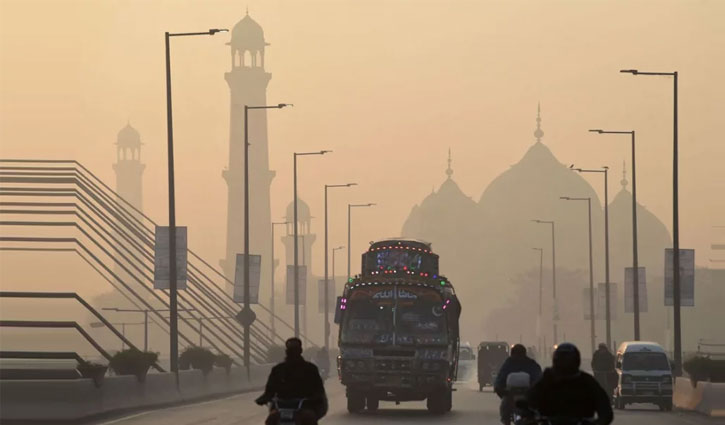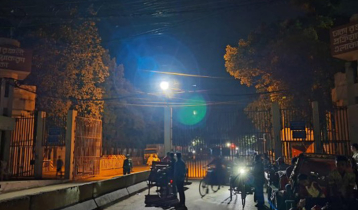Air pollution: Lahore’s smog crisis aka the suffocation
Desk Report || risingbd.com

Lahore The second-largest and most polluted city in Pakistan, has been plagued by a heavy blanket of smog recently, reports the nation.com.
The ever-growing urbanization and industrialization have contributed to the worsening air quality of the city. Smog, being hazardous to health, is leading to a rapid sprout in multiple health-related problems, as well as raising concerns about the long-term deleterious effects on public health.
The current situation is expected to worsen due to the lack of an active action plan from the Pakistan government’s side and a failure of concerned authorities to take note of the urgency of the situation. Hence, we aim to highlight this pressing issue in the light of previously published articles, to alert the relevant authorities regarding the detrimental consequences smog can have on public health and urge them to take immediate action to avoid further damage.
Pakistan is the most urbanized country in South Asia, and its second-largest city Lahore, growing at a rate of 4% annually, is regarded as the most polluted city in Pakistan. Urban settlements are frequently plagued by smog in Asia, and Lahore is no exception. Following the pattern of last year, Lahore has once again been engulfed by a disturbingly heavy blanket of smog, shrouding the entire city and taking a toll on people’s lives.
The exorbitant rise in automobiles, unchecked deforestation, expeditious urbanization, and unabated growth of industries have contributed to this alarming situation over the years. Smog accounts for a rapid sprout in fatal health problems, including exacerbation of asthma, allergies, eye infections, respiratory tract infections, and cardiac pathologies leading to premature death.
Sughis Et Al. reported a concerning finding related to this situation, observing significantly higher levels of systolic and diastolic blood pressure in the school children of Lahore, exposed to high levels of air pollution. This worrisome observation helps highlight the long-term deleterious effects on the health of the public. The Pakistan Environmental Protection Agency (Pak-EPA) and the provincial EPAs are in charge of monitoring air pollution in Pakistan.
In 2010, the Pak- EPA drafted the National Air Quality Standard (NEQS) for ambient air quality. However, the proposed annual mean levels for the ambient particulate matter, PM2.5 and PM10, were higher than the stricter World Health Organization (WHO) guidelines, which are 10 μg/ m3and 20 μg/m3 respectively.
According to data, the levels of the ambient particulate matter reported in Lahore far exceed the recommended values of both WHO guidelines and NEQS guidelines._Agencies.
S B/Nasim

































